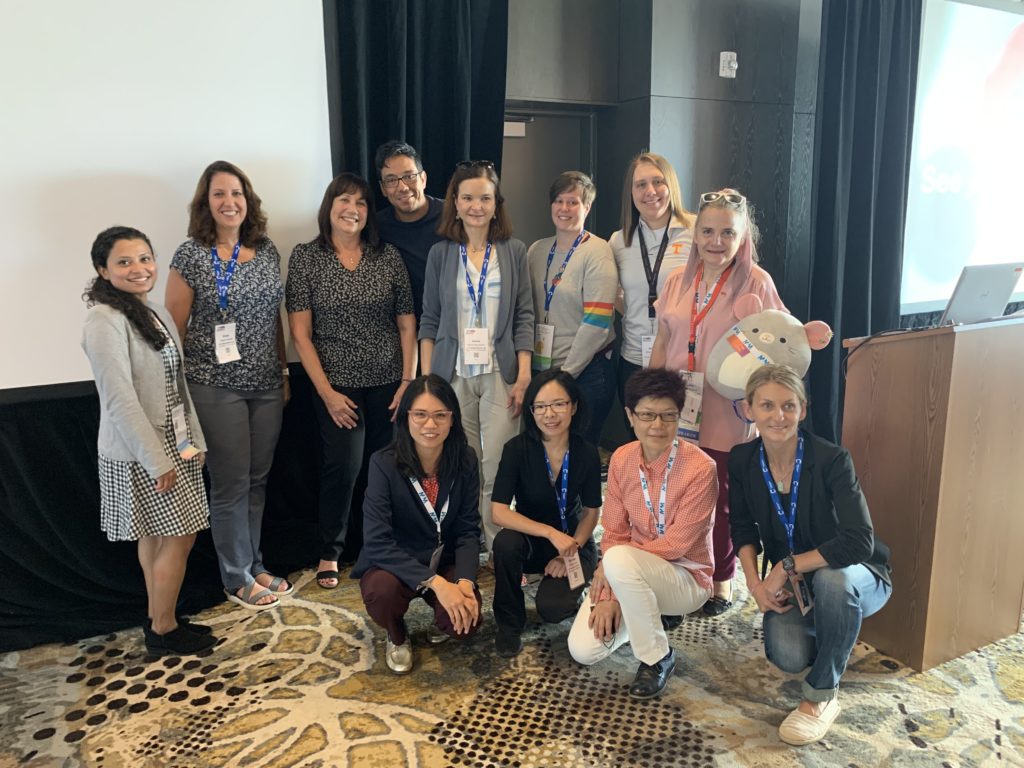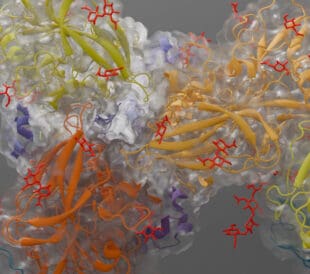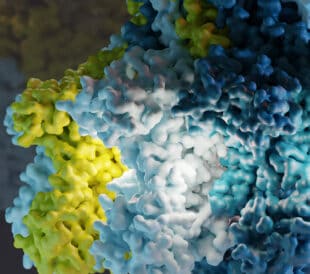Thermo Fisher Scientific returns to the Microscopy and Microanalysis 2022 conference
It took more than 1,000 days and two virtual gatherings in between, but we finally returned this August for our first in-person Microscopy and Microanalysis (M&M) conference since 2019.
It did not disappoint.

Attendees came in droves to learn about the new Thermo Scientific Arctis Cryo-PFIB at M&M 2022.
As the world leader in serving science, we were thrilled to not only showcase to a global audience our latest innovations across microscopy and spectroscopy, but to raise awareness of the groundbreaking work scientists and engineers are doing to make the world healthier, cleaner and safer.
“This year’s M&M Conference in Portland, Oregon was extra special for our team at Thermo Fisher Scientific as we welcomed a record number of attendees,” shared Glyn Davies, President, Materials and Structural Analysis at Thermo Fisher Scientific. “Our colleagues worked tirelessly to put an exceptional event together, which included launching four new product innovations: our Arctis Cryo-Plasma Focused Ion Beam, Embedded CryoSPARC Live Software, Helios 5 Laser Hydra and Helios 5 Laser TriBeam Systems, and the Electronic Dose Control Package on our Spectra S/TEM.”
“We also had the pleasure of kicking-off the Women in Microscopy Breakfast, hosting an appreciation event for hundreds of valued customers and receiving awards from Microscopy Today for top innovations of 2022,” he continued. “The energy and excitement of being back together in person was quite palpable and it was truly an honor for me to be in the midst of so many brilliant minds in my first year as president of the division. I’m excited to see the next wave of scientific innovations we will deliver stemming from connections fostered at M&M 2022.”
Watch our Microscopy and Microanalysis 2022 sessions on-demand >>
A major leap for cryo-electron tomography
On Monday, August 1, 2022, we announced an innovation three years in the making designed to advance cryo-electron tomography (cryo-ET) research.
Analogous to the development of our automated Thermo Scientific Krios Cryo-TEM 15 years ago, which helped catapult cryo-electron microscopy (cryo-EM), we introduced the Thermo Scientific Arctis Cryo-PFIB, a plasma-focused ion beam dedicated to production of cryo-lamellae for the cryo-ET workflow.
The Arctis Cryo-PFIB features a state-of-the-art plasma ion source, an automated sample loading system, integrated fluorescence microscopy, and the lowest contamination rates, allowing preparation of cryo-lamellae at a higher level of productivity than ever before, thus producing the best possible samples for tomography.
We were proud to make this announcement at Microscopy and Microanalysis 2022 alongside The Rosalind Franklin Institute, a collaborator in the development of the new system since 2019.
“Through a strategic effort with Thermo Fisher Scientific on the build of this innovative cryo-PFIB, we hope to increase—by a factor of ten—the number of biological specimens that can be prepared for analysis by structural biology, and pioneer large volume cryo-ET,” said Jim Naismith, director of The Rosalind Franklin Institute.
“You can do it all,” Dr. Karren More to attendees at Women in Microscopy Breakfast
At our 21st annual Women in Microscopy Networking Breakfast, Director of the Center for Nanophase Materials Sciences at Oak Ridge National Laboratory Dr. Karren More spoke to a crowd of more than 700 M&M attendees.
“My advice is to just go for it,” said More, launching into relatable and aspirational stories about her career in Materials Science, and more importantly, the wisdom she has to share with women in similar careers. “It is hard. It is challenging. You can do it all, believe it or not.”
More, who received her Ph.D. from North Carolina State University in 1992, spoke most about one major takeaway from her professional experiences: find and maintain mentors, early and often.
“Seek guidance,” she said. “That was one thing I did not do and that is why I was clueless for so many years. I didn’t know where I was going or what I was doing. Don’t be afraid to ask questions. Go to people who you trust. Find those mentors.”

Dr. Karren More with her team at the 21st annual Women in Microscopy Breakfast.
More has been a research staff member at Oak Ridge National Laboratory since 1988, first in the Materials Science and Technology Division and more recently as the Group Leader for Electron and Atom Probe Microscopy at the Center for Nanophase Materials Sciences (2013-2019). Her research interests are focused on using advanced electron microscopy to understand the structure and chemistry of nanomaterials, especially related to their performance, stability, and durability.
A collaborative move for real-time cryo-EM data analysis
On Wednesday, August 3, we made our second big announcement of the week, this time in collaboration with Structura Biotechnology Inc., a leading provider of cryo-EM data analysis software.
Together, Thermo Fisher and Structura will soon make available a single particle analysis software solution—a new version of Structura’s CryoSPARC Live—designed to integrate with Thermo Scientific Smart EPU Software and cryo-transmission electron microscope (cryo-TEM) technology. The new solution, Embedded CryoSPARC Live, will enable cryo-EM users of all experience levels to obtain high-quality data while reducing the time it takes to transform raw data into high-quality 3D protein structures from days to hours.

Thermo Fisher joined Ali Punjani, CEO and Co-Founder of Structura Biotechnology to announce a collaboration to make available a new software, Embedded CryoSPARC Live.
“We’re thrilled to make this announcement with Structura Biotechnology as we work together to make cryo-EM more accessible, productive and easy to use,” said Trisha Rice, vice president and general manager of life sciences at Thermo Fisher Scientific as part of the announcement.
2022 Microscopy Today Innovation Award: Ultra X EDX Detector
A welcome surprise at this year’s event was being notified of, and accepting, a 2022 Microscopy Today Innovation Award for our work on the Ultra X EDX solution with Dr. Nestor Zaluzec at Argonne National Laboratory.
The Ultra X EDX Detector was invented and designed by Dr. Zaluzec and engineered by Thermo Fisher Scientific. It removes the limitations of current Energy Dispersive X-Rays detectors and allows researchers to collect up to six times more X-rays than are generated by the specimen. It enables applications like low dose EDX, dynamic in situ EDX and ultrafast EDX tomography, all extremely important for the characterization of materials for today and tomorrow.

While onstage, Dr. Zaluzec exclaimed, “A lesson to all you students: you’re never too old to do something!”
See you at Microscopy and Microanalysis 2023 in Minneapolis, Minnesota!
From showcasing 30 years of TEM sample prep for materials scientists, and 40 years of semiconductor failure analysis innovation, to filming a brand-new podcast series with expert, up-and-coming cryo-electron microscopists behind-the-scenes at M&M—we have so much more we could share with you. Check out the content now available on-demand >>
Be sure to sign up early for the next gathering in Minneapolis July 23-27, 2023.




Leave a Reply